
FOLIA MORPHOLOGICA
Scope & Guideline
Advancing the Frontiers of Anatomy and Histology
Introduction
Aims and Scopes
- Anatomical Variations:
The journal focuses on documenting and analyzing variations in anatomical structures, which are crucial for surgical planning, medical education, and understanding human anatomy. - Morphometric Analysis:
It emphasizes quantitative studies of anatomical features, providing critical insights into normal and pathological conditions through various imaging techniques and cadaveric studies. - Clinical Relevance:
Each study published often discusses the clinical implications of anatomical findings, making it a valuable resource for practitioners, surgeons, and researchers in the medical field. - Interdisciplinary Approaches:
The journal encourages interdisciplinary research, integrating anatomy with fields such as radiology, surgery, and pathology to provide comprehensive insights into morphological studies. - Innovative Methodologies:
FOLIA MORPHOLOGICA often features novel methodologies, including advanced imaging techniques and histological analyses, enhancing the precision of anatomical research.
Trending and Emerging
- Clinical Applications of Anatomical Variants:
An increasing number of studies are emphasizing the clinical implications of anatomical variations, particularly in surgical contexts, which enhances the practical utility of anatomical research. - Advanced Imaging Techniques:
There is a growing trend towards the use of advanced imaging modalities, such as cone-beam computed tomography and magnetic resonance imaging, in anatomical studies, allowing for more precise and non-invasive assessments. - Multidisciplinary Research:
Emerging studies are increasingly involving collaboration across various disciplines, including genetics, pathology, and radiology, reflecting a holistic approach to understanding anatomy. - Focus on Rare Anatomical Variations:
There is a notable trend towards documenting rare anatomical variations and their potential clinical significance, which may offer insights into unique surgical challenges and patient management. - Integration of Morphometry with Clinical Outcomes:
Research is increasingly integrating morphometric analyses with clinical outcomes, providing a clearer understanding of how anatomical variations influence treatment and surgical success.
Declining or Waning
- General Anatomy Reviews:
There has been a noticeable decrease in publications focused solely on general anatomy reviews, as the trend shifts towards more specific studies with clinical implications. - Historical Anatomical Studies:
Research centered around historical anatomical practices and classical descriptions is less frequent, indicating a move towards contemporary applications and relevance in modern medical practices. - Animal Anatomy Studies:
Although animal anatomy remains relevant, the frequency of studies dedicated exclusively to comparative anatomy in non-human species is diminishing, possibly due to a greater focus on human anatomical variants and their clinical applications.
Similar Journals

MEDICAL IMAGE ANALYSIS
Pioneering Insights at the Intersection of Medicine and Technology.MEDICAL IMAGE ANALYSIS, published by ELSEVIER, stands as a premier journal in the fields of computer science and medical imaging, particularly focusing on the intersection of Computer Graphics, Computer Vision, and Health Informatics. With an impressive impact factor and a consistent classification in the Q1 quartile across multiple domains including Radiology and Radiological Technology, this journal attracts high-quality research and innovative methodologies that significantly contribute to advancing medical practices and technology. Based in the Netherlands, and covering a gamut of topics from 1996 to 2025, it serves as a vital platform for disseminating cutting-edge studies aiming to enhance diagnostic accuracy and treatment planning through sophisticated imaging techniques. While it does not offer Open Access options, the journal’s rigorous peer-review process and high Scopus rankings—positioning it within the top percentiles across several categories—further solidify its reputation as an essential resource for researchers, professionals, and students committed to the evolution of medical imaging.
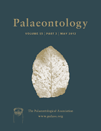
PALAEONTOLOGY
Revealing the Stories of Earth's Biological HeritagePALAEONTOLOGY, published by Wiley in the United Kingdom, is a leading journal dedicated to advancing the knowledge of Earth's biological history through the study of fossilized remains. With an ISSN of 0031-0239 and an E-ISSN of 1475-4983, this journal has established itself as a premier resource in the field, boasting a remarkable Q1 ranking in both Paleontology and Ecology, Evolution, Behavior and Systematics according to the 2023 category quartiles. Its commitment to high-quality research is evidenced by its Scopus rankings, placing it in the 93rd percentile among paleontology journals. While PALAEONTOLOGY is not currently open access, its extensive archival reach from 1979 to 2024 ensures that vital research findings remain accessible to the academic community. This journal not only acts as a platform for cutting-edge research but also fosters collaboration among scientists, students, and professionals interested in the implications of paleontological studies on contemporary ecological and evolutionary issues.

ANNALS OF ANATOMY-ANATOMISCHER ANZEIGER
Cultivating Knowledge in the Anatomical RealmANNALS OF ANATOMY - ANATOMISCHER ANZEIGER is a premier journal published by Elsevier GmbH, focusing on the intricacies of anatomical research and developmental biology. Established in 1992, this journal has continuously contributed to the advancement of knowledge in these fields, boasting an impressive impact factor that positions it within the Q2 quartile for Anatomy and a respectable ranking in Developmental Biology. With a Scopus ranking of #17 in Anatomy and #45 in Developmental Biology, ANNALS OF ANATOMY stands as a critical resource for researchers, professionals, and students alike, fostering scholarly dialogue and innovation. While currently not an open-access journal, its comprehensive scope and rigorous peer-review process ensure that the research published is of the highest quality. Based in Germany, this journal addresses a diverse range of topics and remains an essential platform for disseminating significant findings in the anatomical sciences and their interconnections with other biological fields.

Palaeontographica Abteilung B-Palaeophytologie Palaeobotany-Palaeophytology
Advancing Knowledge in Paleobotanical StudiesPalaeontographica Abteilung B-Palaeophytologie Palaeobotany-Palaeophytology is a distinguished journal published by E SCHWEIZERBARTSCHE VERLAGSBUCHHANDLUNG in Germany, focusing on the intricate study of paleobotany, including the evolution and diversity of plant life throughout geological time. With an impressive Scopus ranking of #25 out of 113 in the field of paleontology, the journal is recognized for its contribution to advancing our understanding of ancient ecosystems, earning a prestigious Q2 quartile ranking in 2023. Despite its lack of open access options, the journal provides invaluable insights for researchers, professionals, and students alike who are passionate about exploring the fossil record and its implications for plant evolutionary history. The journal's collaborative nature and periodic publication schedule, ranging from 2005 to 2024, ensure that it remains at the forefront of paleontological research.

INTERNATIONAL JOURNAL OF MORPHOLOGY
Advancing Knowledge in Morphological ScienceThe INTERNATIONAL JOURNAL OF MORPHOLOGY is a distinguished publication dedicated to the field of anatomy, significantly contributing to the scholarly discourse within this essential area of medical science. Published by the SOC CHILENA ANATOMIA and located in Chile, this journal aims to disseminate groundbreaking research that explores the structural aspects of organisms, from comparative anatomy to developmental processes. With an H-index reflecting its growing impact, the journal has achieved a Q3 ranking in the category of Anatomy according to the 2023 metrics, positioning it among the competitive resources available to the scientific community. Researchers and professionals engaging with this journal can expect to encounter rigorous studies, insightful reviews, and innovative methodologies. Though not strictly open access, the journal remains pivotal for those keen on advancing their understanding of morphological structures and their implications in various fields. With convergence ongoing from 2006 to 2024, the INTERNATIONAL JOURNAL OF MORPHOLOGY is poised to further solidify its role as a vital source of knowledge for anatomy enthusiasts and experts alike.
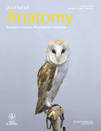
JOURNAL OF ANATOMY
Your Gateway to Cutting-Edge Anatomical DiscoveriesThe JOURNAL OF ANATOMY, published by Wiley, is a premier international journal dedicated to advancing the field of anatomy and its related disciplines. With the ISSN 0021-8782 and E-ISSN 1469-7580, this esteemed journal has been at the forefront of anatomical research since its inception in 1945. Renowned for its rigorous peer-review process, the journal has earned a prestigious impact factor reflecting its high standard of scholarly work. This includes a 2023 Quartile ranking of Q1 in Anatomy, underscoring its prominence among top-tier publications. The journal’s diverse scope encompasses key fields such as cell biology, developmental biology, and molecular biology, making it an essential resource for researchers and practitioners alike. Publishing cutting-edge research and reviews, the JOURNAL OF ANATOMY aims to foster innovative scientific discourse and exploration within the anatomical sciences, solidifying its role as a vital hub for the global anatomical community.
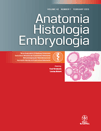
ANATOMIA HISTOLOGIA EMBRYOLOGIA
Fostering Innovative Insights into Anatomy and EmbryologyANATOMIA HISTOLOGIA EMBRYOLOGIA, published by Wiley, is a well-regarded journal that serves as a vital resource in the field of anatomy and histology, with a particular emphasis on embryological studies. Established in 1972, this journal fosters cutting-edge research and discussions that deepen our understanding of the intricate relationships between structure and function across various species, while also addressing the parallels within veterinary and medical contexts. Though currently not open access, the journal maintains a significant impact within its scope, evidenced by its strong performance in Scopus rankings, particularly in the veterinary sciences, where it stands at rank #81 out of 194. With its dedicated focus on progressive scientific inquiry and publication regularly until 2024, the journal is committed to advancing knowledge and providing a platform for scholars, researchers, and practitioners alike. ANATOMIA HISTOLOGIA EMBRYOLOGIA is pivotal for those aiming to engage with the latest findings and methodologies in the fields of medicine and veterinary science, ensuring it remains an essential addition to any academic library.
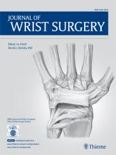
Journal of Wrist Surgery
Advancing wrist care through pioneering research.Journal of Wrist Surgery is a premier journal dedicated to the field of hand and wrist surgery, published by THIEME MEDICAL PUBL INC. With its ISSN 2163-3916 and E-ISSN 2163-3924, this journal aims to provide a rigorous platform for publishing high-quality research that advances the understanding and practice of wrist surgery. Encompassing a wide range of topics from surgical techniques to clinical outcomes, the journal serves as an essential resource for surgeons, researchers, and healthcare professionals dedicated to improving patient care in this specialized area. Though the journal is not open access, it upholds a reputation for scholarly excellence, contributing significantly to its impact in the orthopedic and surgical communities. With an emphasis on innovative and evidence-based practices, the Journal of Wrist Surgery invites submissions that encompass both clinical research and case studies, ensuring that the insights shared are applicable to everyday practice.
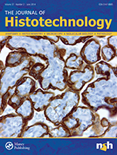
JOURNAL OF HISTOTECHNOLOGY
Elevating histotechnology: where research meets clinical application.JOURNAL OF HISTOTECHNOLOGY, published by Taylor & Francis Ltd, is a leading academic journal dedicated to advancing the field of histotechnology, which plays a crucial role in both clinical and research settings. With an established history since 1977, this journal serves as a critical platform for researchers, professionals, and students engaged in the intricate study of tissue processing, staining techniques, and microscopic analysis. It is currently indexed in reputable databases, reflecting its commitment to scientific rigor, with a notable presence in categories such as Anatomy, Histology, and Medical Laboratory Technology. Despite its open access status being limited, the Journal of Histotechnology maintains a respectable impact factor and ranks within the third quartile for Anatomy and Medical Laboratory Technology, and fourth quartile for Histology in 2023, emphasizing its relevance in the scholarly community. As the field continues to evolve, this journal aims to foster innovation and dissemination of knowledge within histotechnology, making it an essential resource for those looking to further their expertise and contribute to the advancements in this vital area of health sciences.
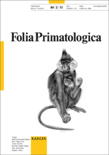
FOLIA PRIMATOLOGICA
Pioneering Insights into Primate Ecology and EvolutionFOLIA PRIMATOLOGICA is a prestigious academic journal published by BRILL, focusing on the interdisciplinary fields of animal science and zoology, as well as ecology and evolutionary biology. With an ISSN of 0015-5713 and E-ISSN 1421-9980, the journal has been a significant contributor to the understanding of primatology since its inception in 1963 and continues to disseminate impactful research through 2024. The journal is recognized in the Q2 quartile for Animal Science and Zoology and Q3 for Ecology, Evolution, Behavior, and Systematics, showcasing a solid reputation within the academic community. Both Scopus rankings and percentiles indicate its influence, with a rank of 137/490 in Animal Science and 277/721 in Ecology and Evolution, reflecting its relevance and commitment to promoting high-quality research. Though it does not operate on an open-access model, FOLIA PRIMATOLOGICA remains a vital resource for researchers, professionals, and students alike, striving to advance the understanding of primates and their ecological contexts within a global framework.